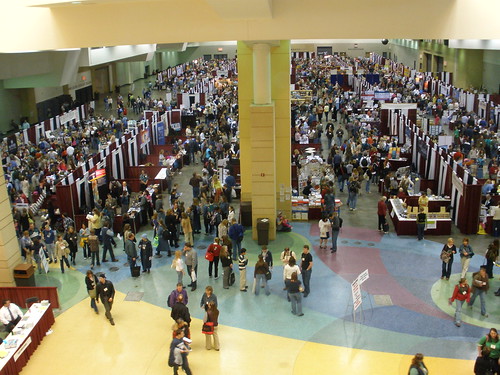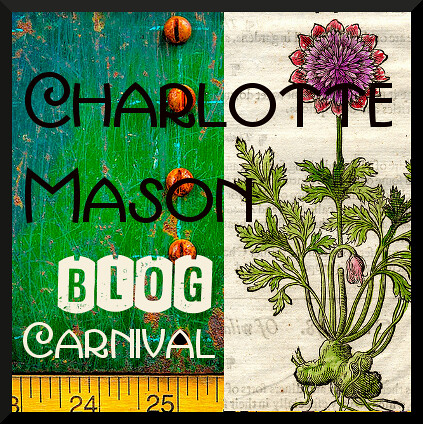
One of the greatest benefits of homeschool conferences are networking with your local homeschool families, making friends and contacts for support. There are always inspirational talks on pretty much every category, and if there's not a speaker, there's a vendor or experienced homeschool families on hand to talk to. Sometimes you can get material at a discount, but at the very least you can buy it there and won't have to pay shipping.
However, I can't really imagine any environment, that I've experienced apart from Disneyland and the like, that is more overwhelming and over-stimulating. There's a lot you can learn, but there's an awful lot you'd be better off not even knowing about! There's simply too much. The only way to do it is to set your expectations ahead of time, maybe even go with a friend who can help you stay on task, but most importantly, have your plan ready.

The lady who took this said it wasn't even half!!
My first 2 homeschool conferences, I probably looked like a deer in the headlights the ENTIRE time. I felt like a deer in the headlights. I was stunned. I'm sure I walked around in a daze. I know that I bumped into people! It was astounding! I never knew there were so many homeschoolers... and it seemed they'd all written their own books and every other one was selling their own curriculum! It all looked so GOOD! My kids were too little (preschool) to realistically get excited about too much, but it was all so new and fascinating. I was wide open, I didn't have any notion of what I was going to do, and I had no books or anything to do it with either... so, I did the logical thing, I went to the conference!
In retrospect:
In my ignorance I did things backwards. I should have figured out what I wanted, and then gone to the conference to fill in the cracks... well, those were the days before everyone and her sister were blogging about homeschool, writing curriculum reviews online and the availability of buying used curriculum online and at amazon wasn't nearly as prolific as it is now. But nowadays, there is no excuse. One must research online. However, one cannot do it all. Before doing anything, sit down and really figure out your kids. Look at yourself, how do you learn, how do you teach? THEN go to work online figuring out what will work for your family. There are websites designed for this very thing. Start there LONG before going to a conference. However, once you know what you want, conferences can be a very enjoyable experience. If you can put your 'blinders' on, tune out most of the noise and stay focused on what your family's necessities are... you'll do fine!
Since those early days, I know our family's style, I've investigated some online, I have my list of books and resources I'd like to look through for a given subject made out ahead of time. I always study the list of speakers in the weeks before the conference to determine between those which will really be a help to me and those that are good but really just added 'noise'. If I can, I like to go to a conference every year. Obviously, living in Peru has prohibited that in the last years, but never fear, there are now online homeschooling conferences! Will we ever escape?
This subject merits a whole page of its own. I'm sure someone has done it somewhere... don't you just love google? ;)
Each of the following are the conferences I've attended over the years:
Heart of the Matter Online
The link to this year's conference: 2009 Parenting and Home Education Conference
(I really enjoyed being able to be in my own home and listen to the speakers at my leisure! You also don't miss any of the speakers... you can listen to ALL the workshops! The other cool thing is they give you the mp3s for FREE, so that you can listen again later!
This option does not help with the local networking aspect or with cutting down on shipping costs for curriculum, however. ) I posted about my experience HERE. The price is now a lovely $12.95!
 |  |
The Network of Iowa Christian Home Educators
This year's conference: June 5th and 6th at First Federated Church
Des Moines, Iowa

Washington Association of Teaching Christian Homes
They are going to have KEN HAM this year!!! I so, so, SO want to go!
Conference & Family Retreat
August 7-8, 2009
Oregon Christian Home Education Network
June 12 & 13, 2009 Oregon Convention Center
Portland, Oregon






























